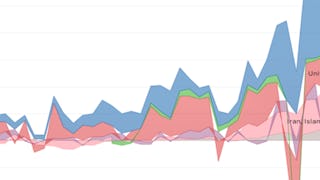In this course, you’ll move from estimating fundamentals to applied practice, learning how estimators measure and interpret work across multiple construction trades. You’ll explore how takeoffs for site and earthwork, concrete, metal, masonry, and carpentry are performed and how each trade contributes to the overall project cost.



Recommended experience
Skills you'll gain
Details to know

Add to your LinkedIn profile
October 2025
See how employees at top companies are mastering in-demand skills

There are 4 modules in this course
In this module, you’ll refresh the foundational skills you developed in earlier courses: reading plans, interpreting specifications, and understanding how drawings translate into measurable quantities. You’ll practice connecting these elements to the estimating process and assess your readiness to move into trade-specific takeoffs. By the end, you’ll feel confident navigating a set of plans and preparing to perform precise quantity takeoffs for multiple construction trades.
What's included
6 videos1 reading2 assignments
This is the heart of the course, where you’ll apply your estimating skills to real construction trades. In this comprehensive module, you’ll step through quantity takeoffs for site and earthwork, concrete, metal, masonry, and carpentry work. You will be guided through each discipline, showing how to interpret drawings, calculate quantities, and avoid common pitfalls. You’ll see how takeoffs vary across trades and how each contributes to a complete project estimate. By the end of this module, you’ll have a clear, hands-on understanding of how estimators measure, calculate, and compile trade-specific costs, the essential building blocks of accurate construction estimating.
What's included
33 videos6 assignments
Estimating is becoming increasingly digital, and today’s professionals use software tools to measure, mark-up, and manage project data efficiently. In this module, you’ll explore how two industry-standard tools — On-Screen Takeoff (OST) and Bluebeam Revu — support the quantity takeoff process. Through guided demonstrations, you’ll see how estimators use these platforms to calculate quantities, track revisions, and collaborate with teams. Even if you don’t have direct access to these tools, you’ll gain a clear understanding of their capabilities, benefits, and how digital workflows improve accuracy and coordination in estimating. By the end of this module, you’ll be able to explain how digital takeoffs work, recognize the similarities and differences between OST and Bluebeam, and reflect on how technology supports your estimating practice.
What's included
19 videos3 assignments
In this final module, you’ll explore how an estimator’s work connects directly to time and labor in the field. Through guided examples, you’ll learn how to calculate and interpret productivity rates, evaluate what affects crew performance, and understand how time management decisions influence overall project costs. You’ll also see how estimators use productivity data to forecast labor needs and identify areas for improvement. By the end of this module, you’ll understand how accurate takeoffs and realistic productivity assumptions work together to build a complete, reliable estimate, ready to carry forward into the next course, Presenting the Estimate.
What's included
13 videos2 assignments
Instructor

Offered by
Why people choose Coursera for their career




Explore more from Business

Rutgers the State University of New Jersey

Columbia University

Indian School of Business

Google Cloud
¹ Some assignments in this course are AI-graded. For these assignments, your data will be used in accordance with Coursera's Privacy Notice.

